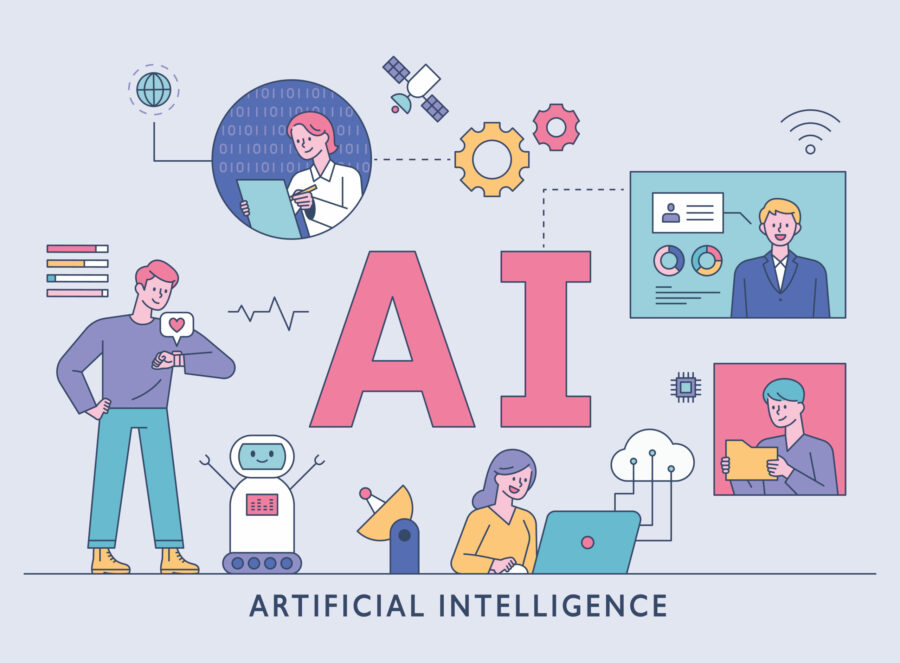Data makes the world go round. Running your business smoothly and successfully largely depends on collecting, analyzing, understanding, and acting upon the data from every aspect of the operation. Whether it’s understanding customer trends or trying to develop a strategic plan for an upcoming product, understanding your data is essential. Collecting and compiling that data manually isn’t always the most efficient method. Automated business intelligence/analysis (ABA) is a fantastic alternative. With ABA, your business can track subtle changes and receive better insights into data. With an artificial intelligence-based system that integrates with existing business tools, you can glean helpful information in real-time, with all the benefits an automated system can provide. Here are a few ways to use ABA to help your business.
Obtain Immediate Insight
When you’re collecting data, it’s essential to be able to use it to glean insights about how your organization is performing. With automated business tools, you don’t have to wait for your analysts to parse and analyze the data; instead, you should have access to some kind of dashboard and features that’ll offer fast or immediate insights. Interpreting large data sets fast is part of what makes an ABA platform an incredibly valuable tool. As the automation software sifts through all of the data, it recognizes trends and other key information. Some platforms put together four to five “data stories” to help organizations understand and use their accumulated data. These data stories give a clear picture of the most interesting and useful things that are happening within your data flow. The software shares four or five stories that your business can use to analyze its performance and make any strategic changes that may be needed to increase efficiency and performance. These insights show what happened, outline why it’s relevant to the company and generates suggestions on how to move forward. It’s a useful way to rapidly attain insight without worrying about human error or bad data. It also offers a means to be proactive with your planning, rather than reacting to some unexpected thing down the line.
Understand Trends
Trends demonstrate how data changes over time. Trends can be geographic (where the data you’re collecting is focused on where customers are located), temporal (actually collecting and analyzing how things change over a defined time period), or intuitive (looking at trends based on behavior and demographics). It’s not easy to understand or predict how customers will behave or purchase products. It’s always changing, so it’s useful to understand how their current and past spending habits correlate with each other. Think about it this way: maybe you had a well-performing product last year that was flying off the shelves. Then, all of a sudden, the sales experience a sharp decline. You need to find out why and figure out some sort of long-term solution to the problem. Was it just a seasonal trend? Did your sale prices have a significant impact? Did the demographic or target audience change at some point? These are all distinct possibilities. Leveraging the trend data, you can craft a better marketing plan and discover new ways to market and eventually sell your product. Knowing and understanding your customers is the most direct route to success. Understanding trend data is the vehicle that will take you there.
Get Instant Data About Milestones
In the world of business analysis, a milestone is an essential data vector, regardless of industry. Just like the name implies, milestones identify the highest or lowest point of data over a pre-defined period. Whether it’s a week, a month, a financial quarter, a year, or the entire product lifecycle, milestones are an important way to truly understand a product’s performance. Therefore, understanding them and using what you’ve learned about them effectively is vital. Tracking milestones, trend data, and some metrics you may not even know about are what automated business intelligence is all about. Powerful AI and analysis tools automatically look at your data and provide the insights you need to quickly and effectively act on these milestones in a meaningful way.
Identify Significant Changes Quickly
Sometimes, finding and analyzing significant changes within your data can take a long time. When your data changes, it isn’t always easy to find or identify a significant change quickly. Failing to spot a change can cause problems later on—especially if the change and its associated insight could potentially lead to a better marketing strategy. But trends and marketing are only part of it. Identifying and reacting to major changes acts as a shield against fraud and product issues as well. Taking swift, appropriate action on this data increases efficiency, saves both you and your customers time, and may even lead to improved customer conversion rates over time.
Assess Overlooked Data With Better Accuracy Using AI

Identifying trends, spikes, milestones, and a new normal is all part of what makes a data story work for you. But automation also helps you understand and detect overlooked data. Using powerful artificial intelligence and machine learning, ABA programs detect insight from numerous data sets and accumulated data. It then goes about sorting and parsing that data into something the business can actually understand and use. With a vast database of statistics and SQL databases at its disposal, the AI is able to paint a detailed picture of an operation culled from over a billion data points essentially behind the scenes. Interacting with these tools as a human data analyst is simple, and you can upload any data you want the AI to analyze to the cloud. This way, you’re able to get a more robust analysis of your data points and spot any hidden or overlooked data that may potentially be a game-changer when it comes to creating a successful business strategy at some point in the future. In this case, AI is just another tool you can use to make automated business tools work for you and your organization.







